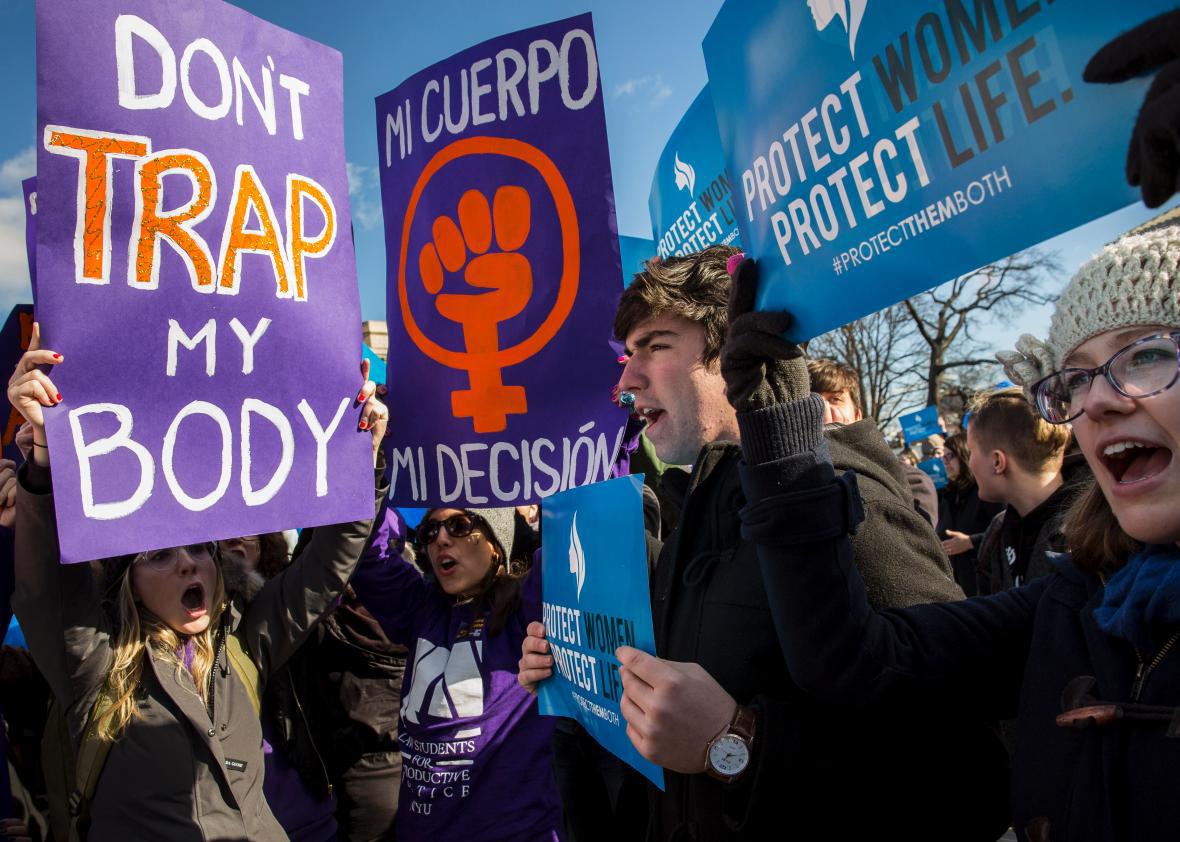As we await Monday’s ruling on the Texas abortion law and contemplate the court’s unexpected decision to uphold Texas’ affirmative action program, I am thinking about standards of judicial review, procedural dispositions, and stare decisis.
Issues of profound social, personal, and moral import sometimes require us to sound all lawyerly precisely because how the court devises and applies technical doctrines can hugely affect lives. But the complex legal intricacies involved can obscure and obfuscate in ways that require some translation.
This brings us, for instance, to the disagreement over the second case’s likely impact in the term’s Texas trio, the immigration order affirmed by an equally divided court. I join the chorus of those calling “foul” with anger and sadness. Walter beautifully captured the harm of the court’s unsigned single sentence in his own few words: “Seldom have so many hopes been crushed by so few words.” He was right to suggest a rehearing and a stay pending the Senate doing its job and confirming a ninth justice.
Which brings me to this observation: A 4–4 split in Monday’s Whole Women’s Health decision could similarly let stand a very bad Fifth Circuit decision, but like U.S. v. Texas, the disposition also may mask the harm. Any decision will impose serious harms unless it strikes down the onerous restrictions Texas has imposed, requiring abortion clinics to retrofit or rebuild in costly and entirely unjustified ways, and to obtain unobtainable hospital admitting privileges.
I just cannot believe the court—that is, Justice Anthony Kennedy—would uphold a law so extreme that it should fail any standard of review. These are restrictions that would, if they go into effect, shut down three-quarters of Texas’ abortion providers for no good reason. As some of the justices noted at argument, this will add to the special harm of women without the means to travel hundreds of miles to the nearest provider. And I suspect everyone knows that’s precisely why Texas enacted the law: to limit access to this constitutionally protected right.
I do not believe the worst will happen (of course I’ve been wrong before). More likely we will get a complicated ruling that we must be prepared to understand. If Justice Kennedy is not willing to outright strike down the Texas law—as any fair reading of Planned Parenthood v. Casey dictates—the court is likely to remand the case for further proceedings, including additional fact finding by the lower courts to determine if the law constitutes an “undue burden.”
But even if accompanied by a stay of the Texas law, a remand is also likely to impose far-reaching harms that may not be immediately apparent. The details will depend on the specifics of Monday’s ruling, so stay tuned.
For now, I also want to turn to the vital role of standards of review, because they often determine outcomes—and the court is applying the wrong ones in both Whole Women’s Health and Fisher. It applied strict scrutiny in Fisher when intermediate scrutiny is the more appropriate standard. And it applies an invented, indeterminate form of intermediate scrutiny (the “undue burden” standard) to abortion restrictions when government interference with a fundamental right should simply trigger strict scrutiny.
In Roe v. Wade and a series of decisions over the following two decades, the court did apply strict scrutiny and easily invalidated harmful abortion restrictions like those now at issue in Texas and across the nation. The court overruled that standard in its 1992 compromise decision Casey, with the promise that the new standard would protect women from restrictions that would unduly burden their personal reproductive decisions.
I was serving with Walter at the Office of Legal Counsel in 1996 when the court overruled a prior decision to require strict scrutiny of federal programs designed to benefit historically disadvantaged minorities, which required many thousands of hours, across many departments and agencies, in a very complicated review.
Especially in this election year, we should recall how we got to this point. The last year in which the court included a majority of justices appointed by Democratic presidents was 1969. Between 1969 and 1992, Republican presidents appointed 10 consecutive justices.
Of course, political party is an imperfect predictor of how a justice will vote, and many issues do not raise such questions. But it is especially telling when you focus on issues a party explicitly has made a political priority, such as the Republican commitment begun decades ago to end affirmative action and overrule Roe—specifically through judicial appointments.
Finally, stare decisis. Should a future court revert back to the more appropriate standards of review? Not necessarily. Fisher demonstrates that strict scrutiny can work in the context of affirmative action, if appropriately applied, for example, with an appreciation of the tremendous differences between discrimination against historically disadvantaged minorities, on the one hand, and efforts to remedy the continuing effects of such past discrimination or promote diversity, on the other.
So too, Casey’s undue burden test, if properly applied here, can fulfill its promise to protect women’s fundamental rights from governmental interference. Judge Posner demonstrated that with a model decision invalidating a similar Wisconsin law, as did Judge Myron Thompson in striking down an Alabama law. Hopefully, the court tomorrow will follow their lead. The undue burden test need not be disturbed—just fairly applied—to strike down the Texas regulations. It is a sad fact that this outcome is even in doubt.
